About Shametu River Lodge
Opened in July 2016, Shametu River Lodge is 7km south west of Divundu, in Namibia's central Caprivi.
Built on the banks of the Kavango River, it affords the best views of Popa Rapids of any privately owned lodge in the area. Guests staying here can enjoy the river, game drives into the Bwabwata and Mahango national parks, and village visits.
Shametu River Lodge is a relatively new addition to the lodges in the Divundu area and we would very much liked to have stayed longer than one night. Not only does it have a picturesque location close to Popa Falls, but it also offers convenient access to the nearby national parks and activities on the Kavango River.
Our view
Shametu River Lodge is a relatively new addition to the lodges in the Divundu area and we would very much liked to have stayed longer than one night. Not only does it have a picturesque location close to Popa Falls, but it also offers convenient access to the nearby national parks and activities on the Kavango River.
Accommodation
15 rooms
Children
Best for 6+
Open
All year
Activities

4WD Safari

Birdwatching

Boat trip

Cultural excursion

Fishing

Mokoro

Private activities
Traveller reviews of Shametu River Lodge
4 real, un-edited reviews from Expert Africa's travellers.
Arrived 14 Jul 2024, 1 nights
"Shametu River Lodge review"
Overall rating: Excellent
Arrived 14 Sep 2022, 2 nights
"Shametu River Lodge - somewhat disappointing"
Overall rating: Poor
Arrived 27 Sep 2018, 2 nights
"Strange welcome at Shametu River lodge"
Overall rating: Good
Arrived 27 Mar 2017, 2 nights
"Lodge by Poppit Falls"
Overall rating: Average
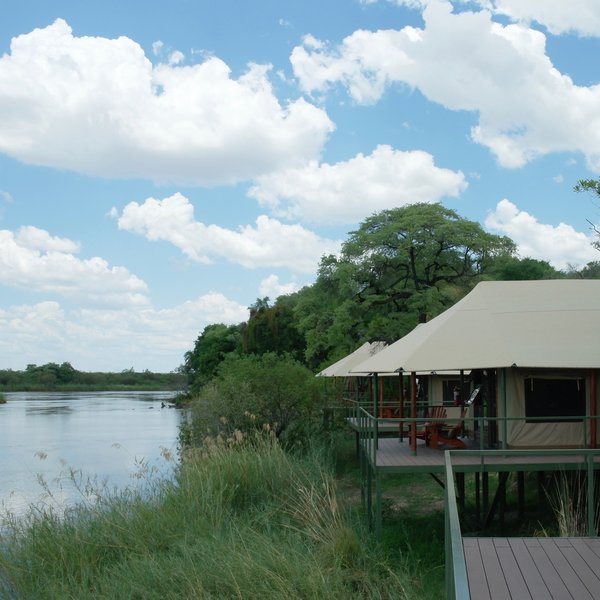



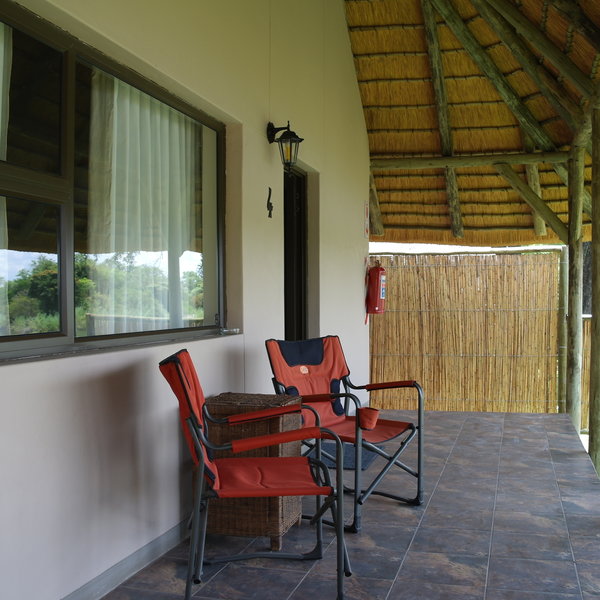


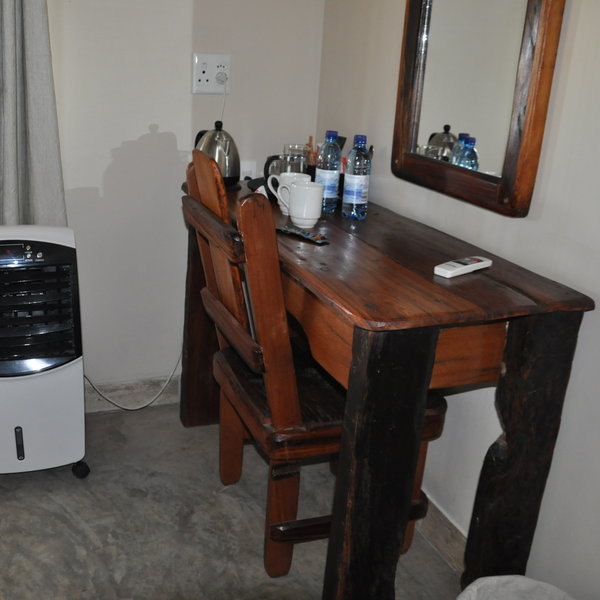




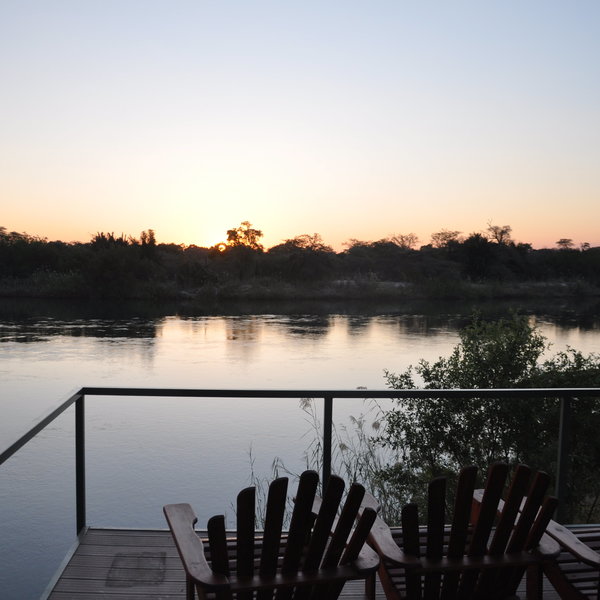
Expert Africa's gallery
When we travel we take lots of photos ourselves to give you a real and un-edited view of the safaris. See our 13 pictures of Shametu Lodge to get the candid view.
View gallerySafaris visiting Shametu Lodge
Just ideas, we'll always tailor-make a trip for you


Rock Hare Self-drive Safari
20 days • 12 locations • 3 country
WINDHOEK AIRPORT TO VICTORIA FALLS AIRPORT
An in-depth look at Namibia from the Namib Desert to the Caprivi, with additional stops in Botswana and Victoria Falls. This three-week adventure includes an unrivalled mix of environments and is great value.
Visiting Etosha, North-west Kalahari and 7 other areas
US$7,520 - US$8,500 per person
Shametu River Lodge: Our full report
Opened in July 2016, Shametu River Lodge is 7km south west of Divundu, in Namibia's central Caprivi.
Built on the banks of the Kavango River, it affords the best views of Popa Rapids of any privately owned lodge in the area. Guests staying here can enjoy the river, game drives into the Bwabwata and Mahango national parks, and village visits.
Popa Falls – which despite the name is really no more than a series of pretty rapids – is encompassed within the tiny Popa Falls Reserve. An area of dense vegetation, it attracts plenty of waterbirds, and can be explored on foot. While Shametu River Lodge is the closest private lodge to the falls, the basic NWR owned Popa Falls Resort is closer.
Shametu has 15 rooms split into three types: four ‘luxury’ chalets, four river-facing tented rooms and seven standard rooms. All have en-suite shower rooms, tea and coffee stations, safes, mosquito nets over the beds and verandas with director's-style chairs to relax and enjoy the view.
- The four ’luxury’ chalets are set away from the other rooms, facing the river – and have the best views of the Popa Rapids. The largest and most luxurious of the room types at Shametu, they are also set slightly lower, so that you are almost at eye-level with the river – something that we particularly appreciated when we last stayed in July 2017 Each has his and hers basins in the shower rooms, a writing desk and an indoor seating area with comfy leather armchairs. Although reed screens ensure privacy between these chalets, they are quite close to each other – though we had no complaints at all. From our veranda, we saw a variety of birdlife on the riverbank as well as a family of otters in the river. We understand that hippos and crocodiles are also commonly seen here.
- The four river-facing tented rooms are built on stilts right on the riverbank, affording excellent views of the Kavango. They are only slightly smaller than the ‘luxury’ chalets and work well for those who prefer a tented feel.
- The seven standard rooms are set back from the river, behind the tented rooms and slightly up a hill. As a result, these don't all have river views. Two of the standard rooms have an interleading door, creating a family room.
Down more steps the area opens out onto manicured lawns leading to an inviting pool and a sundowner deck/outdoor bar, both with views of the river and rapids. This is a great spot to sample an item from the light lunch menu or to enjoy a sundowner. We really liked this area, although it will improve further as the bare man-made banks slowly vegetate and the new stone paths and steps start to blend in to the environment.
Shametu also has a mini spa, offering guests a range of treatments – from pedicures to full body massages. These need to be booked a day ahead.
Activities from Shametu focus predominantly on the river, with fishing trips, sundowner cruises and mokoro trips all on offer. The lodge also offers game drives into the Mahango and Bwabwata national parks, and village walks can also be arranged. We thoroughly enjoyed our morning drive, guided by one of the owners, into the buffalo core conservation area of Bwabwata National Park. Having left the lodge at around 8.00am, we drove through the forest alongside the Kavango River and spotted not only elephants moving through the bush but also buffalo grazing on the floodplains. We also saw a variety of other mammals, including bushbuck, impala, kudu, red lechwe and vervet monkeys, and some interesting birds, from blue waxbills and little bee-eaters in the more forested areas to African skimmers and wattled cranes nearer the river.
Activities
4WD Safari
Birdwatching
Boat trip
Cultural excursion
Fishing
Mokoro
Private activities
Families & children
- Attitude towards children
- All ages are welcome at Shametu River Lodge.
- Property’s age restrictions
- None
- Special activities & services
- None
- Equipment
- Cots can be provided on request
- Generally recommended for children
- Shametu has plenty of space and an atmosphere that would suit families with school-age children well.
- Notes
- There are lots of steps, some drop offs, and unfenced access to the river so children need constant supervision.
Food & drink
- Usual board basis
- Half Board
- Food quality
- On our last visit in July 2017, Shametu was also catering for a large film crew who were filming in the area, so the number of people at mealtimes was larger than normal. That said, there was easily enough space for everyone and we still thoroughly enjoyed our meals here.
Breakfast consisted of a considerable cold buffet with various cereals, breads, cold meats, cheeses and fruits – including freshly picked strawberries from the lodge’s own garden. Eggs, sausages and bacon are available to order.
The lunch menu is varied and reasonably priced with options ranging from sandwiches and salads to fish and steak.
For dinner we started with a rich butternut squash soup with warm bread rolls. Our main course was a buffet of hearty food with a real home-cooked feel. We sampled the cottage pie and roasted chicken tray bake, with coleslaw, various cooked vegetables and salsa. Pudding was a lovely vanilla cream cake. - Dining style
- Individual Tables
- Dining locations
- Indoor and Outdoor Dining
- Further dining info, including room service
- Room service is not possible
- Drinks included
- Complimentary bottled water is provided in the rooms, but all other drinks are charged separately. There is a good choice of alcoholic drinks on offer, so order a cocktail from the pool bar to watch the sun go down or enjoy Hansa beer on draught.
Our travellers’ wildlife sightings from Shametu Lodge
Since mid-2018, many of our travellers who stayed at Shametu River Lodge have kindly recorded their wildlife sightings and shared them with us. The results are below. Click an animal to see more, and here to see more on our methodology.

100% success

50% success

50% success

50% success

50% success

50% success

50% success

50% success

0% success

0% success

0% success

0% success

0% success

0% success

0% success

0% success

0% success
Getting there
- Location
- Caprivi Strip, Namibia
- Ideal length of stay
- Two nights
- Directions
- Shametu River Lodge is 7km south west of Divundu, overlooking the Popa Rapids.
- Accessible by
- Self-drive
Special interests
- Birdwatching safaris
- The Mahango Core Area’s varied habitats support the largest variety of avian species in Namibia, making it a perfect place for birdwatching. While Shametu River Lodge isn't the closest camp to Mahango, it is one of our favourites in this area.
- See ideas for Birdwatching safaris in Namibia
Communications
- Power supply notes
- Generator back up
- Communications
- There is cellphone coverage throughout the lodge and WiFi in the main reception area.
- TV & radio
- There is a TV in the main lounge area.
- Water supply
- Other
- Water supply notes
- Water is pumped from the river and filtered; while it is fit for washing, it is not suitable for consumption.
All the rooms have hot and cold running water, with gas geysers for hot water. They are also fitted with flush toilets and plumbed showers.
Health & safety
- Malarial protection recommended
- Yes
- Medical care
- The nearest doctor is in Divundu (7km away), and there is a hospital in Rundu (210km away).
- Dangerous animals
- Moderate Risk
- Security measures
- There is a guard on the gate during the day and three security guards patrol the lodge at night.
- Fire safety
- There are fire extinguishers outside each of the rooms and in the main areas.
Useful info
- Disabled access
- On Request
- Laundry facilities
- Laundry is available at an additional charge for guests staying at least two nights.
- Money
- There are small electrical safes in the rooms.
- Accepted payment on location
- Payment may be made by Visa, Mastercard or Maestro, or in cash using US dollars, euros, Namibian dollars and South African rand.
Plan and book your trip with Expert Africa
All of our trips are tailor-made, so we'll always adapt them to suit you. Talk to an Expert and let us plan and arrange your perfect trip.

Talk to an Expert
Call or email us now! We’ll match you with the Specialist in our team who is best suited to help you. Then together we can start planning your trip.

Set up your itinerary
Based on our experience and your ideas, your specialist will create a detailed, costed itinerary. We’ll refine it together, until we have a trip that you’re perfectly happy with.

Prepare for your trip
The same Specialist will make the seamless arrangements for your trip, send you detailed travel documents, and be available to answer any questions before you depart.

Travel with peace of mind
After you set off, you’ll be cared for by our partners in Africa, most of whom have worked with Expert Africa for decades. And if you ever need us urgently, we’re available 24/7.

When you return
We love to learn about your trip, and so will always be grateful if you’ve the time to give feedback to your Specialist when you return.
Shametu River Lodge's location
Look closer at the environment and surroundings of Shametu Lodge.
Other lodges in Caprivi Strip
Alternative places to stay in this same area.

Ndhovu Safari Lodge
Ndhovu is a simple riverside lodge, with tents that are reminiscent of safaris a decade or two ago.

Hakusembe Lodge
Hakusembe River Lodge is a substantial lodge with a superb location on the Kavango River.

Chobe Princesses
The Chobe Princess houseboats offer a memorable way to explore the Chobe and Zambezi Rivers in Namibia's Caprivi. Perfect for a couple or for a group of family or friends.

Lianshulu Lodge
Beside the Kwando River, within Mudumu National Park, Lianshulu is a small safari lodge offering 4WD safaris and river trips – with particularly good birdlife.

Nkasa Lupala
Peaceful Nkasa Lupala is a comfortable lodge in a remote and little-explored area close to Nkasa Rupara National Park.

Nunda River Lodge
NNunda River Lodge overlooks a pretty part of the Kavango River near Popa Falls and the productive Mahango National Park.

Ichingo Chobe Lodge
Safari holiday in Namibia's Caprivi Strip, staying at Ichingo Chobe River Lodge on Impalila Island.

Camp Kwando
Near to Mudumu National Park, Camp Kwando is a comfortable and unfussy option with opportunities for game drives, boat safaris and fishing.

Nambwa Tented Lodge
A beautiful safari lodge In the remote Bwabwata National Park, Nambwa Tented Lodge brings serious comfort to a relaxing safari.

River Dance
Build on stilts on the banks of the Kavango River, River Dance Lodge has great views, a relaxed ambience and excellent birdlife.

Zambezi Queen
The Zambezi Queen offers luxurious two- and three-night cruises along the game-rich Chobe River, including game viewing by small boat and 4WD as well as catch-and-release fishing.

Taranga Lodge
Situated on the banks of the Kavango, Taranga Safari Lodge works as a convenient stopover before going onto explore the Caprivi.

Divava Lodge & Spa
The substantial Divava Okavango Lodge & Spa offers plenty of pampering opportunities in an unspoilt riverside setting

Cascade Island Lodge
Cascade Island Lodge, near Kasane in the Caprivi Strip is a very luxurious, high end option for those seeking peace and privacy on the Zambezi River.
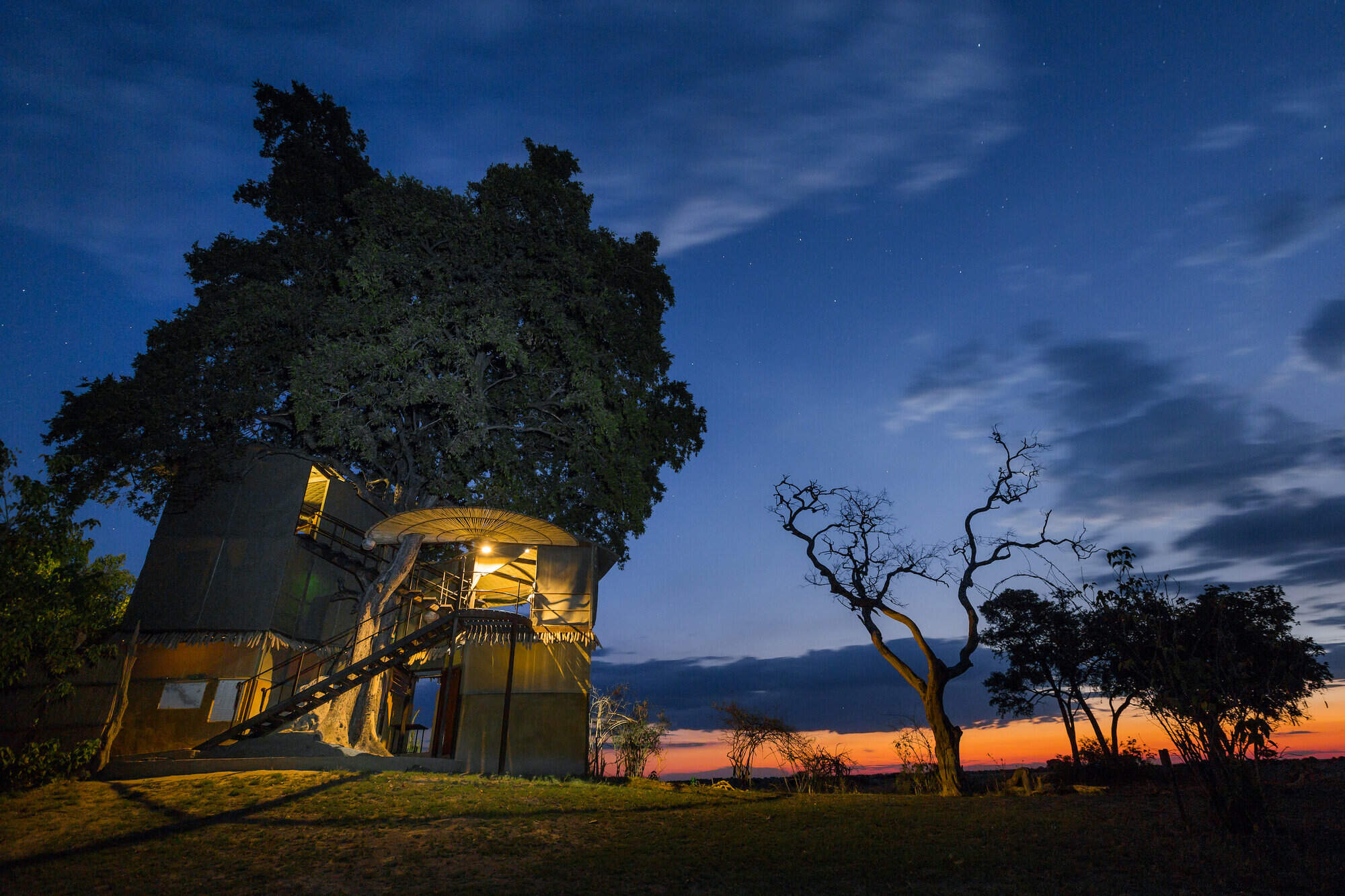
Jackalberry Camp
Jackalberry Camp is uniquely situated in the Nkasa Rupara National Park affording unrivalled access to this little-visited corner of Namibia.

Namushasha Lodge
One of the larger lodges in the Bwabwata National Park, Namushasha is an economic option with an attractive river-side location.

Kazile Island Lodge
On an island in the Kwando River within Bwabwata National Park, the remote Kazile lsland Lodge offers games drives, bush walks and boat cruises.

Serondela
Accessible only by river, Serondela combines the remoteness of Namibia’s Caprivi Strip with access to Botswana’s flagship Chobe National Park.

Chobe Savanna Lodge
Chobe Savanna Lodge stands opposite Chobe National Park, Botswana. Click here to learn more about the area and your options for a safari there.

Chobe Water Villas
Chobe Water Villas is a beautiful and thoughtfully designed lodge, in a great location on the Namibian banks of the Chobe River.

Nkasa Linyanti
On a private island within the remote Nkasa Rupara National Park, Nkasa Linyanti will combine tented comfort with an impressive range of safari activities.
When to go to Caprivi Strip
Our month by month guide: What it's like to visit Shametu Lodge in Caprivi Strip
Jan
Feb
Mar
Apr
May
Jun
Jul
Aug
Sep
Oct
Nov
Dec
Caprivi Strip in January
January marks the heart of the rainy season in the Caprivi Strip. The Zambezi and Kwando rivers swell, nourishing the lush landscapes of Bwabwata and Mudumu National Parks. Rainfall can be heavy but localised, with temperatures around 30°C/86°F.
The verdant environment makes a refreshing change, especially in typically drier areas. Birdlife is abundant, with many species in full breeding plumage and migratory birds present in force. In Nkasa Rupara National Park, the abundant water allows wildlife to disperse, making it more challenging to spot. However, boat cruises along the major rivers offer excellent opportunities for wildlife viewing and birdwatching.
- Variable weather: hot and dry or humid with rain
- Occasional localised thunderstorms in the region
- Abundant birdlife, especially migratory species
- Wildlife dispersed, harder to spot in Bwabwata
- Few tourists, low rates at lodges and camps
Our view
This is not a great time to visit
Weather in January
Caprivi Strip in February
February is the wettest month in the Caprivi Strip, with the Zambezi Region experiencing some of the heaviest rainfall. The Kavango and Zambezi rivers reach their peak levels, creating a lush, green paradise.
Days alternate between clear, hot and humid, and cooler with building clouds culminating in spectacular thunderstorms. These storms can cause flash floods, bringing ephemeral rivers to life and making travel more challenging, especially in remote areas like Khaudum National Park. The landscape feels vibrant and alive; insects and smaller animals are more easily seen in Bwabwata and Mudumu National Parks. Many birds and animals are raising their young. However, the abundance of water and thicker vegetation can make it harder to spot larger wildlife. Boat safaris along the Chobe River offer excellent game viewing opportunities.
- Weather alternates between hot/dry and humid/rainy
- Thunderstorms meander over the lush landscape
- Vibrant birdlife in wetlands and floodplains
- Wildlife scattered across Bwabwata National Park
- Low tourist numbers, great deals on accommodation
Our view
This is not a great time to visit
Weather in February
Caprivi Strip in March
March usually sees the main rains in the Caprivi Strip tailing off, though precipitation varies across the region. Many days are clear with strong sun, while others may end with short, spectacular thunderstorms. As the month progresses, these rains reduce in frequency and volume. The landscape remains vivid and green, particularly in Bwabwata and Mudumu National Parks.
Wildlife viewing can be challenging as animals disperse, but patient observers may spot young animals and a variety of bird species in breeding plumage. The Kwando and Zambezi rivers remain high, offering excellent opportunities for boat safaris and fishing. Impalila Island becomes more accessible as water levels start to recede.
- Weather varies: clear and hot or cloudy and humid
- Thunderstorms decrease as the month progresses
- Animals well-fed after months of plentiful food
- Wildlife viewing challenging in Bwabwata Park
- Few visitors, low rates at lodges and camps
Our view
A good time to visit, with pros & cons
Weather in March
Caprivi Strip in April
April in the Caprivi Strip is characterised by increasingly dry weather, with temperatures starting to fall. Days remain pleasantly warm, and humidity is still high, but nights start to have a slight chill. The recent rains leave the region lush and green, particularly in Bwabwata and Nkasa Rupara National Parks.
Animals are in excellent condition, often with fast-growing young. As the atmosphere clears, photographers can capture spectacular landscapes and healthy wildlife. Stargazing becomes more rewarding as night skies clear.
In the northern parks like Mudumu and Bwabwata, water and food remain plentiful, so big game can be more dispersed. However, boat safaris along the Zambezi and Chobe rivers continue to offer excellent wildlife viewing opportunities. April is an ideal time for birdwatching, with many migratory species still present.
- Nights become cooler and drier in the region
- Easter sees a slight increase in visitor numbers
- Wildlife still dispersed in Bwabwata National Park
- Migratory birds begin their northward journey
- Lush green landscapes and crisp, clean air
Our view
A good time to visit, with pros & cons
Weather in April
Caprivi Strip in May
By May, the Caprivi Strip is drying out, but if rains have been good the land remains green. Wildlife in Bwabwata and Mudumu National Parks starts to congregate around permanent water sources. The air quality and clarity can be amazing, making this an ideal month for photography.
Typical days are warm with crisp, clear mornings and blue skies. Evenings are cool, with temperatures possibly dipping below 10°C/50°F overnight. Many lodges still charge low season prices, offering good value. The combination of increasingly good wildlife sightings, beautiful landscapes, and crystal-clear air makes May one of the best months to visit the Caprivi Strip. River activities along the Zambezi, Chobe, and Kwando rivers are particularly enjoyable, with pleasant temperatures and good wildlife viewing opportunities.
- Pleasant weather: warm days and cool nights
- Landscapes remain green as the region dries out
- Excellent visibility for wildlife photography
- Low visitor numbers and moderate lodge rates
- Wildlife starts to congregate near water sources
Our view
A very good time to visit
Weather in May
Caprivi Strip in June
June sees the Caprivi Strip fully dry, with blue, cloudless skies. Days are warm and dry, while nights can be cold, sometimes near freezing in more exposed areas. Warm clothing is essential for early morning game drives in Bwabwata and Mudumu National Parks.
Wildlife viewing enters its dry-season pattern, focusing around waterholes and rivers. The Kwando and Zambezi rivers offer excellent boat safari opportunities, with animals frequently coming to drink. Photographers benefit from superb air clarity, with minimal dust or smoke. Fishing, particularly for tigerfish, becomes increasingly popular as water levels stabilise.
Historically, June accommodation prices have been low, but the region's increasing popularity means some lodges now charge higher prices.
- Clear days, cold nights
- Great conditions for landscape photography
- Moderate lodge rates in this shoulder season
- Wildlife gathers at waterholes for easier viewing
- Some greenery persists in the lush landscape
Our view
A very good time to visit
Weather in June
Caprivi Strip in July
July in the Caprivi Strip offers reliably warm daytime temperatures above 20°C/68°F and excellent wildlife sightings. Rain is extremely rare, and clear skies make for great photographs, especially in Bwabwata and Nkasa Rupara National Parks. Nights can be very cold, potentially below freezing in exposed areas. Visitors should dress in layers and be prepared for chilly morning and evening game drives.
As vegetation dries out, game concentrates around water sources., and the Kwando and Zambezi rivers become wildlife hotspots, offering excellent boat safari opportunities. Lodges charge high season rates, and many are fully booked well in advance, especially during European school holidays.
- Dry days, cold nights ideal for stargazing
- European holidays bring more family travellers
- Peak season with higher rates and busy lodges
- Excellent wildlife viewing in Bwabwata Park
- Boat safaris popular on the region's rivers
Our view
A very good time to visit
Weather in July
Caprivi Strip in August
August is the height of winter in the Caprivi Strip. Expect cloudless skies and warm sun during the day, but nights can drop to freezing in exposed areas. Warm clothes are essential for early morning and evening activities.
The landscape is dry, with much vegetation turned golden brown, creating stark and beautiful scenery in Bwabwata and Mudumu National Parks. Wildlife congregates around available water sources, guaranteeing excellent animal sightings, especially along the Kwando and Zambezi rivers. Boat safaris and fishing expeditions are highly rewarding, with animals frequently seen coming to the water's edge to drink.
August is the most popular time to visit, particularly for families. Advance booking is crucial for the best lodges.
- Dry days and cold nights continue in Caprivi
- Cloudless skies offer spectacular stargazing
- Busier season, especially for family accommodation options
- Peak rates and advance bookings necessary
- Prime time for game drives and river safaris
Our view
Fantastic: the very best time to visit
Weather in August
Caprivi Strip in September
September in the Caprivi Strip brings blue, cloudless skies and fantastic wildlife viewing. Rain is almost unheard of, and temperatures gradually increase. Daily maximums can reach the low 30s Celsius / 80s Fahrenheit, though low humidity keeps it comfortable. Nights remain cool.
The air becomes dustier, creating atmospheric scenes for photography. In Bwabwata, Mudumu, and Nkasa Rupara National Parks, animals cluster around remaining water sources, making September one of the best months for game viewing. It's a popular time for visitors, with high season rates in effect. Safari enthusiasts often choose this month for its reliable wildlife sightings. Boat safaris along the Zambezi and Chobe rivers offer excellent opportunities to see elephants and other wildlife coming to drink.
- Excellent month for wildlife viewing in Caprivi
- Warming temperatures as the month progresses
- Landscape transitions from green to golden brown
- High season rates at lodges and camps continue
- Advance bookings essential for accommodation
Our view
Fantastic: the very best time to visit
Weather in September
Caprivi Strip in October
October is typically the hottest and driest month in the Caprivi Strip. Temperatures build throughout the month, with daily highs potentially exceeding 40°C/104°F, though the low humidity makes it bearable. In rare years, isolated showers may occur late in the month.
Wildlife viewing in Bwabwata and Mudumu National Parks is at its peak, with animals congregating around dwindling water sources. The Zambezi and Kwando rivers become crucial lifelines for wildlife. October is popular among wildlife enthusiasts and commands peak-season prices. Dust and occasional smoke can create hazy conditions, challenging for photographers but creating dramatic scenes. Boat safaris offer respite from the heat and excellent game viewing.
- Peak wildlife-viewing in Bwabwata National Park
- Hot and dry conditions throughout the region
- Hazy air due to dust and occasional bush fires
- High season rates at lodges and camps persist
- Early October sees many facilities fully booked
Our view
A very good time to visit
Weather in October
Caprivi Strip in November
November in the Caprivi Strip can be unpredictable, alternating between hot, dry periods and cooler, cloudier days. Typically, mornings start clear and hot, with clouds building in the afternoon. Humidity increases, often culminating in spectacular late-afternoon thunderstorms. These storms are usually localised, bringing relief to some areas while others remain dry. Places receiving rain quickly flush green, softening the landscape in Bwabwata and Nkasa Rupara National Parks.
Many mammals give birth as the first rains arrive. Once rains begin, wildlife in the parks becomes more dispersed, making game viewing more challenging. However, this is an excellent time for birdwatchers, with migrant species arriving in breeding plumage. Boat safaris along the major rivers continue to offer good wildlife viewing opportunities.
- Variable conditions depending on the rains
- New life emerges with the onset of rains
- Wildlife viewing shifts to wetter areas
- Shoulder season offers value for money
- Increased chance of showers later in the month
Our view
A good time to visit, with pros & cons
Weather in November
Caprivi Strip in December
December marks the first proper month of the Caprivi Strip's rainy season and is one of the hottest. Mornings are often clear, giving way to building clouds and occasional short, spectacular thunderstorms. These rains are generally welcomed, clearing the air of dust and prompting plant life to erupt across Bwabwata and Mudumu National Parks.
Young animals abound, and many bird species are in breeding plumage. Wildlife disperses widely with the increased water availability, making game viewing more challenging but rewarding for patient observers. The Zambezi and Kwando rivers offer cooler temperatures and continued opportunities for boat safaris and fishing. Christmas and New Year fall within local summer holidays, so accommodation options can be surprisingly busy, especially around Katima Mulilo and other major towns.
- Hot and humid, occasional cooling showers
- Landscape turns green where rain has fallen
- Renewed energy in the lush Caprivi environment
- Clear air enhances photography opportunities
- Excellent for birdwatching, challenging for mammals
Our view
This is not a great time to visit
Weather in December

Looking for inspiration on where to travel next?
Visit our trip chooser to explore your options and find inspiration for your perfect African adventure
Inspire me

